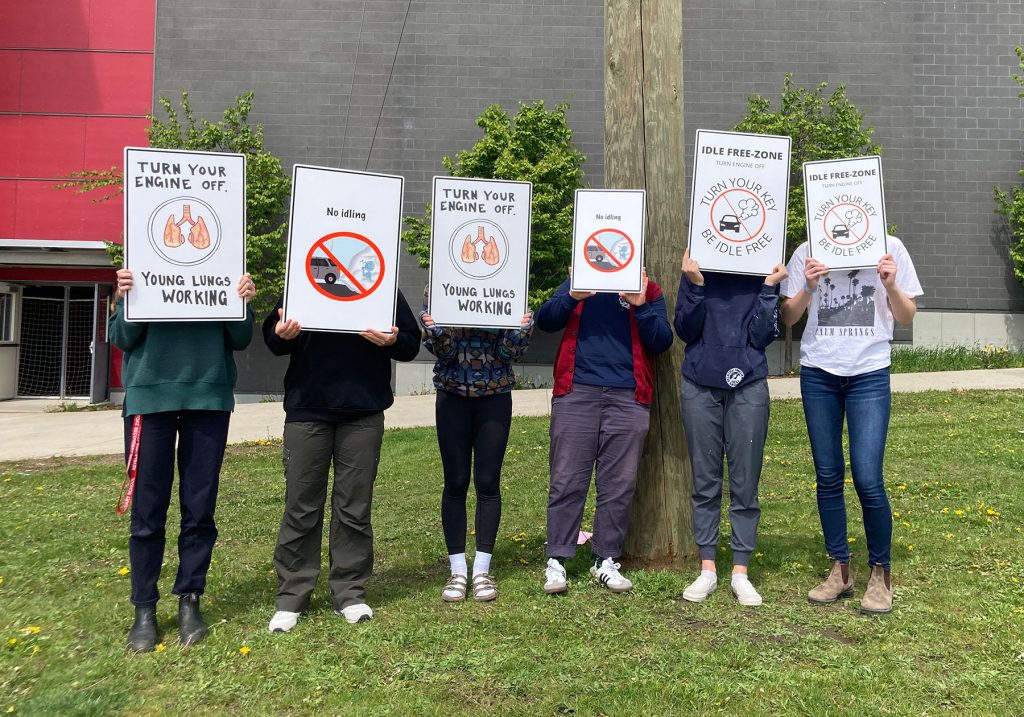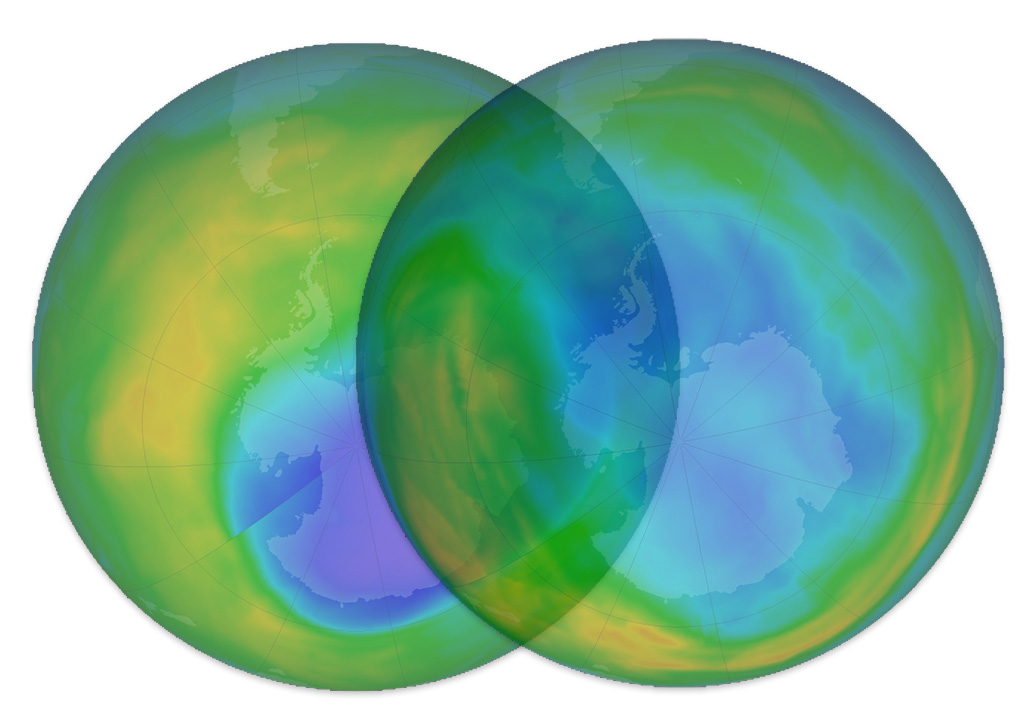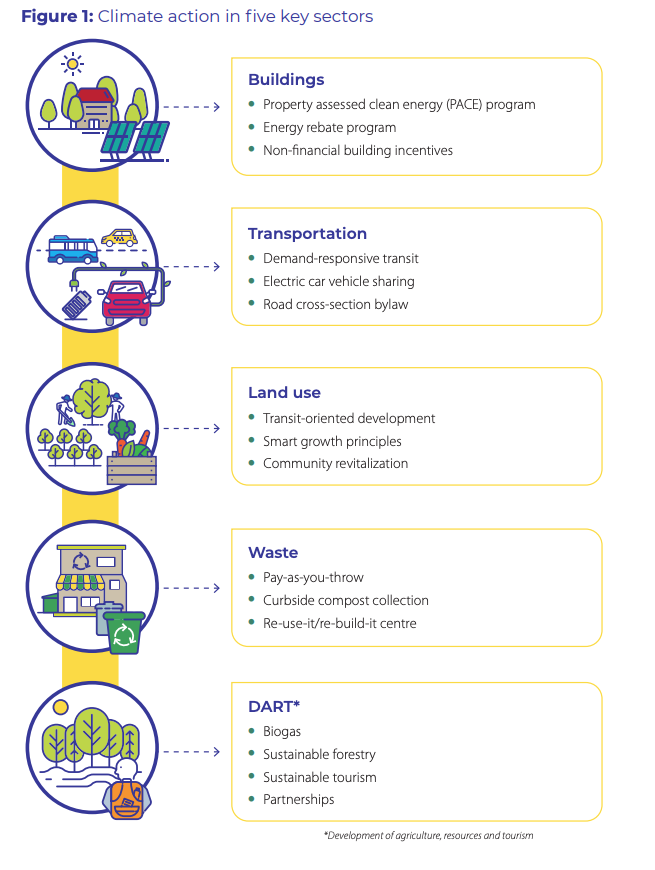Eco-Anxiety and Climate Change
Young Canadians and the Future
The natural environment is changing, and people are worried about what it means for the future. Many, and particularly young, Canadians are experiencing a diversity of challenging emotions related to climate change. That worry, which is increasingly becoming severe enough to cause distress and dysfunction, is often called eco-anxiety.
Key DefinitionThe American Psychological Association and ecoAmerica have defined eco-anxiety (aka climate anxiety) as “a chronic fear of environmental doom.”
|
This fear can stem from direct experience of extreme weather events and environmental change (e.g., floods, forest fires, hurricanes, drought) or exposure to climate change information through news media and other sources.
In 2023, 1,000 young people (aged 16–25) across Canada were interviewed about climate change. The result was a study entitled “Climate emotions and anxiety among young people in Canada.” Here are some of the key findings.

The Outdoors as Place to Mitigate Eco-Anxiety
Resources exist to support you. It is normal to have strong or negative feelings. This report from the Mental Health Commission of Canada can help you dive deeper into this topic.
One of the most effective ways to reduce eco-anxiety is through direct contact with nature. Spending time in natural environments, such as forests, parks, or beaches, allows us to disconnect from the constant barrage of distressing news and connect with something greater than ourselves. A 2020 review of peer-reviewed studies on the topic[1] found that spending as little as 10 to 20 minutes in nature daily may prevent stress and mental health strain for people between the ages of 18 and 22. Physiological markers of reduced stress include decreased heart rate and blood pressure; psychological markers include less depression, anxiety, and fatigue — and increased vigour, positive affect, and feelings of calm.
Thus, any time we are out, whether it is a dog walk, hike, paddle or ski, we are working to reduce eco-anxiety for ourselves and others. The work you do provides you and your guests with multiple benefits:
- Improved mood with exposure to sunlight
- Boosts to the immune system
- Enhanced creativity and productivity; and
- Outdoor recreation allows us to remember and value the more important things in life like our relationships, sharing, and the community.
This can be a big topic ,though, so here are some more detailed ways to help.
Support Yourself

Get the facts — but don’t oversaturate
While it’s useful to be informed, “doomscrolling” or submersing yourself in a stream of negative climate headlines can make eco-anxiety that feels distressing debilitating. Consider resources like the Climate Atlas of Canada or The Narwhal for news and information.

Acknowledge your emotions
Don’t deny the valid emotional responses you’re having to climate change. It’s natural to feel some worry, sadness, or stress when it comes to the future of the environment. Try to recognize these feelings as they arise and use them as motivation to take action.
It’s also okay to be frustrated by the hypocrisy inherent in climate change activism — no one lives a zero-impact life. That said, spotting mixed messaging can also be a way to build your knowledge base.

Focus on what you can control
As with any anxiety, dwelling on “what if” scenarios may lead to feelings of helplessness and uncertainty. To get back a sense of control, focus on the actions you can personally take — including education or activism — to reduce your own carbon footprint.

Connect with others who share your concerns
Engage with like-minded people (e.g., colleagues, community groups) who can offer support and understanding. Research suggests that building a sense of community may help reduce the adverse mental health impacts of climate change.

Seek additional help when you need it
If you’re concerned about the impact your symptoms are having on your life, reach out for additional support. A conversation with a health or mental health professional and virtual resources like those from Wellness Together Canada can make a big difference.
For Indigenous communities, Hope for Wellness offers a 24-7 Canada-wide helpline and chat service.

Encourage participants in your programming to voice their concerns
If climate change is an unusual topic in your spaces, expressing feelings of eco-anxiety can feel taboo. To help break down that stigma, start the conversation, share your own concerns, and encourage others to do the same. Initiating circle time or offering reflection time after sharing about climate change interpretation can be a key moment. When talking to children, be prepared to answer their questions about climate change and help them understand what it means for them.

Develop an action plan
Work with your employer, local groups, or support network to create an action plan that contains steps and activities you can all feel good about. Doing so can help renew a sense of hope and control within the group and may also strengthen the social connections that promote and protect mental health. Make this a part of the work you do each day. We’ll provide opportunities for this later on in the course.

Share hope
When you see or hear of an encouraging news story, initiative, or idea about curbing the effects of climate change, share it! Fostering a sense of hope can help channel eco-anxiety into action (instead of fatalism). Try to find a recent example per season so that you can share up-to-date, relevant, good-news stories with your group(s)!

Direct others to mental health resources when they need them
Make a point of encouraging others to seek help. Share that if people are experiencing difficulties with mood, motivation, or day-to-day functioning, consider directing them to the additional mental health resources mentioned above. It is not your role to counsel, unless you are qualified to do so, but lending a listening ear and then recommending professional support is a great way to help.
Bringing Climate Change Education Together: Delivery and Climate Change Communication Tools
A key component when planning your communication with any audience is your delivery method. It is important to use a variety of instructional/communication methods to bring the full picture to people through sensory input.
- When choosing visuals, look for images that show people taking positive action. Choose images that convey emotion or a story, and avoid images that focus too heavily on crises. Use your trauma-aware lens to evaluate if a photograph might cause a strong negative reaction in your audience. If you’re not sure that your images convey your message well, ask for assistance from friends and colleagues. Infographics are a good alternative to charts and graphs for sharing measurements and data. If you must use a chart or graph, make sure it is clearly labelled, doesn’t have too much or too many types of information to share, is easy to see and understand from a distance, and uses colours that are easy to see the difference between (even in greyscale for those audience members who may be colourblind). You can laminate graphs or images to share; they are light in your backpack.
- Be aware of your audiences’ knowledge and understanding of climate change when considering the vocabulary you will use in your presentation or discussion. Using language that is full of jargon may cause your audience to feel distanced from the causes and consequences of climate change if they can’t easily understand what you are saying.
- In science communication, designing your presentation around an 8th-grade level of understanding is a good way to start. When sharing the written word, choose a font that can easily be read by someone with less-than-perfect eyesight (e.g., block print instead of script). Using puppets or large image cards can help people engage, too.
- How you speak this information aloud matters. It is important to use a calm, explanatory tone that includes everyone and doesn’t stimulate crisis thinking. It often helps to start with something your audience is already likely to understand, and show them how climate issues and actions are an extension of what they already know or do.
- You can also use comedy! Joy just makes sense for engagement. A 2019 study[2] found that using comedy to discuss climate change left participants feeling more hopeful and empowered to take action. The science behind climate change can also be complex and unapproachable. Humorous ways of sharing information can engage a wider audience, which is a necessary step toward producing change. This follows the rule that only 3.5% of a population needs to be engaged in a movement for it to succeed.
- People are motivated to take action when they feel like they can make a difference. So, focus more on explaining how they can make a difference than on explaining the problem they need to address. When a situation seems hopeless, people are more likely to shut down and dissociate themselves from the issue.
- Focusing on the positive opportunities of solving a problem and how to concretely enact the new action or behaviour is a more effective way to communicate. Using a reasonable, measured tone with positive examples of solutions — and people putting those solutions into action — works best.
- Since many people learn by doing, involve your audience in a direct, interactive experience of your topic whenever possible. This could take the form of walking through an environment as you describe the different habitat types, looking at specific plants that have adapted to climate change, or doing an invasive species ID bingo (laminated cards you can use again and again are great) and then talking about how the spread of invasive species weakens ecosystems and makes them more vulnerable to the effects of climate change, showing people how nature or humans have adapted/reacted to change.
- It could also be asking your group to write or draw their thoughts about or responses to a particular question or exercise as you progress through your guided trip.
Success Stories from the Past and Present
Local

Small-scale projects can do wonders!
In Revelstoke, young people created new no-idling signs for their school district. These designs had to meet the sign requirements of the municipality, so it was a collaborative effort, as the municipality provided the template and signage costs. Students felt empowered, peers voted on their favourite design, and creative folks were called in to make the signs attractive and easy to engage with.
National

Canada-wide Single-use Plastic Ban
As Canada welcomes the world to the 15th Conference of the Parties (COP15) by the United Nations Convention on Biological Diversity, the Government of Canada reaffirmed its steadfast commitment to addressing plastic pollution and protecting biodiversity here at home and around the world.
- checkout bags
- cutlery
- foodservice ware made from, or containing, problematic plastics that are hard to recycle
- stir sticks
- straws (with some exceptions)
A ban on the manufacture and import of ring carriers entered into force in June 2023.
Global

Ozone Layer Recovery
The ozone layer is slowly restoring itself and its largest hole is expected to be on par with 1980 levels by 2066, according to a United Nations assessment of the goals set forth in the Montreal Protocol released this month.
- Ozone is a naturally occurring gas comprising three oxygen atoms. The stratospheric ozone layer is essential in protecting humans and the natural environment from the harmful ultraviolet light from the sun.
- Gases like chlorofluorocarbons, or CFCs, destroy stratospheric ozone and are responsible for the ozone hole over Antarctica and Australia
- In the 1970s, Australia’s ozone layer was severely thinned as a consequence of heavy use of ozone-depleting substances such as chloroflurocarbons (CFCs) and hydro-chloroflurocarbons (HCFCs).
- Strict controls were put in place in 1987 with the passing of the 1987 Montreal Protocol.
- Despite strict control on these substances, Australia’s ozone still has a long road to recovery to reach its original levels. Full recovery of the ozone layer is not expected until at least the end of this century, if not well in to the next one (and this has been impacted by wildfires creating a larger hole recently).
- The recent report found that emissions of ozone-depleting substances, or ODSs, like CFCs have dramatically declined over the past 30 years, which spells good news for the recovery of stratospheric ozone.
- Although emissions of ODS have dramatically declined, it will still take many more years for the ozone layer to recover. Globally, the ozone layer is expected to return to average 1980 levels by 2040. The Antarctic ozone hole will persist until 2066 or so.
- This overall reversal of ozone depletion shows the impact humanity can have when we work together to tackle a problem collectively.
5 Key Sectors
In 2021, the ‘Small and Rural Communities Climate Action Guidebook’ from the Partners for Climate Protection (PCP) program (a network of over 450 Canadian municipalities committed to taking action on climate change, reducing greenhouse gas emissions, and making a difference in protecting climate) came up with five key sectors to action on:
As guides or outdoor leaders, it is important to understand where we can fit personally and professionally into these wider community-wide initiatives. Using the table below, add in personal actions that you can take in your outdoor educational sphere or personal life to address climate change.
|
|
||||||||||||||||||
|---|---|---|---|---|---|---|---|---|---|---|---|---|---|---|---|---|---|---|
| ㅤ | ||||||||||||||||||
|
Let’s continue onto the fourth major section of this course: The Role of Justice and Racism in Environmental Education.
- Meredith Genevive R., Rakow Donald A., Eldermire Erin R. B., Madsen Cecelia G., Shelley Steven P., Sachs Naomi A.(2020).Minimum Time Dose in Nature to Positively Impact the Mental Health of College-Aged Students, and How to Measure It: A Scoping Review .Frontiers in Psychology.10 https://www.frontiersin.org/articles/10.3389/fpsyg.2019.02942 ↵
- Beth Osnes, Maxwell Boykoff & Patrick Chandler (2019) Good-natured comedy to enrich climate communication, Comedy Studies, 10:2, 224-236, DOI: 10.1080/2040610X.2019.1623513 ↵
- ‘Small and Rural Communities Climate Action Guidebook’ from the Partners for Climate Protection (PCP) program (2021). ↵



